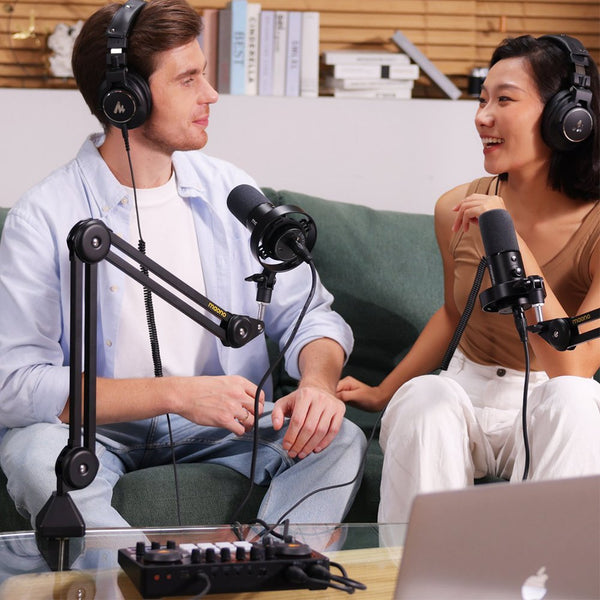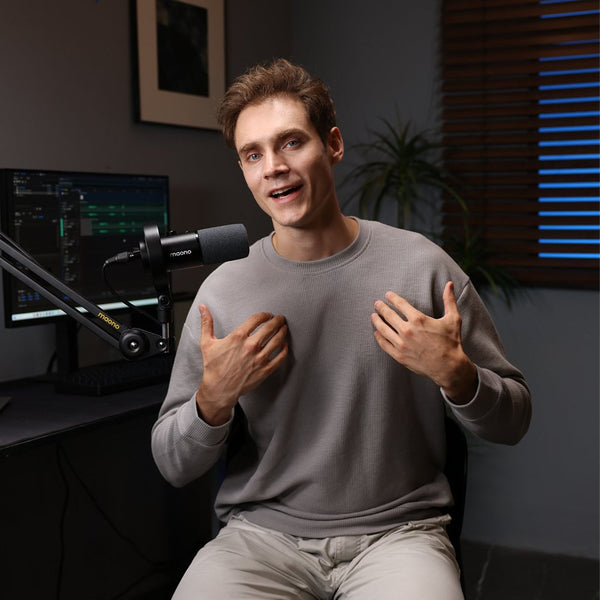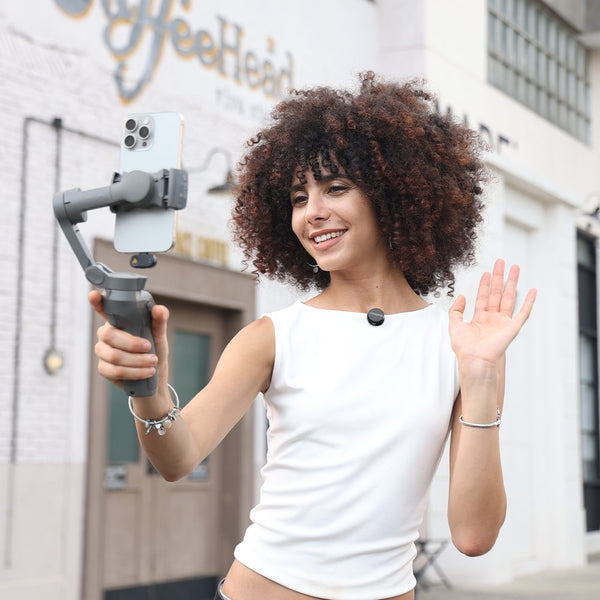Are you a beginner in podcasting? If so, you might want to learn some quick tips about creating a solo podcast before launching your channel. Starting a podcast is just the beginning—you also need to know how to keep your listeners engaged. Continue reading to discover more essential tips for solo podcast recording.
Podcasting has grown into one of the most powerful ways to share stories, knowledge, and entertainment. But when you’re recording a solo podcast, the challenge feels bigger—you’re responsible for carrying the entire conversation, keeping your audience engaged, and ensuring your content sounds professional.
One of the most important elements of solo podcasting is structure. Without it, even great ideas can sound scattered or monotonous. A well-structured episode helps guide listeners through your content, making it easier for them to stay tuned and return for more.
In this article, we’ll explore the best solo podcast recording tips, covering everything from setting up your home studio to choosing the right podcast microphone, structuring your episodes, and maintaining energy when recording alone.
How to Set Up a Home Studio for Solo Podcast Recording
You don’t need an expensive, professional studio to produce a great solo podcast. A simple, quiet space can work wonders if set up properly.
-
Choose the right room: Avoid large, empty spaces. Smaller rooms with soft furnishings absorb sound better and reduce echo.
-
Soundproofing basics: Add rugs, curtains, or foam panels to minimize background noise and reverb.
-
Desk setup: Position your podcast mic about 6–8 inches from your mouth. Use a pop filter to reduce plosives and a boom arm to avoid table vibrations.
Creating a home studio that’s comfortable and distraction-free will instantly improve your recording quality.
Techniques to Improve Vocal Delivery and Confidence
When recording alone, your voice becomes the primary tool for connection. Good delivery can keep listeners hooked even without a co-host.
-
Warm up your voice: Practice tongue twisters or simple vocal exercises before hitting record.
-
Maintain energy: Stand while recording if possible—it helps project your voice with confidence.
-
Vary tone and pace: Avoid sounding flat by changing pitch, adding pauses, and emphasizing key words.
-
Smile while speaking: It may sound odd, but smiling affects your vocal tone, making you sound more engaging.
Confidence builds over time, but practicing these techniques will help you sound natural and authentic.
Best Tips for Recording a Solo Podcast
Here are some essential tips to keep in mind:
-
Plan your content
Have a clear outline for each episode.
-
Keep episodes concise
Solo episodes often work best between 15–30 minutes.
-
Batch record
If possible, record multiple episodes in one sitting to save time.
-
Monitor audio levels
Use headphones to catch background noise or distortions early.
-
Edit for flow
Cut long pauses, filler words, and mistakes for a cleaner final product.
Script vs. Freestyle: Preparing for a Solo Podcast Episode
Preparation style depends on your personality and podcast format.
-
Scripted approach: Great for delivering structured, precise content. But avoid reading word-for-word—it can sound robotic.
-
Freestyle with bullet points: Allows for more natural flow, but requires practice to stay focused.
Many solo podcasters find a hybrid method works best: detailed bullet points with key phrases, plus room for improvisation.
Solo Podcast Recording Software: Free vs. Paid Options
Your software choice influences ease of use and final sound quality.
-
Free options:
-
Audacity – Beginner-friendly, open-source, and feature-rich.
-
GarageBand (Mac) – Simple, effective, and great for editing.
-
Paid options:
-
Adobe Audition – Professional-level features, advanced editing.
-
Hindenburg Journalist – Optimized for spoken-word content.
If you’re just starting, free options are more than enough. Upgrade later as your podcast grows.
Structuring a Solo Episode to Keep Listeners Engaged
Since you’re the only voice, structure becomes vital for pacing. A simple formula works well:
-
Hook: Start with an attention-grabbing statement or question.
-
Intro: Briefly introduce yourself and the episode’s topic.
-
Main content: Break down into 2–3 clear sections.
-
Recap: Summarize key points before wrapping up.
-
Call-to-action: Ask listeners to subscribe, share, or engage.
This structure helps listeners know what to expect and keeps episodes organized.
Common Mistakes to Avoid When Recording Solo Podcasts
-
Monotone delivery: Keep energy high to avoid losing attention.
-
Over-editing: Perfection isn’t necessary—authenticity matters more.
-
Ignoring audio quality: Background noise or echoes make listeners tune out.
-
Skipping preparation: Even experienced hosts benefit from outlines.
-
Talking too long: Without a co-host, pacing is crucial; don’t drag.
Choosing the Right Microphone for Solo Podcasting
Your podcasting mic can make or break your sound quality. Here are some recommendations:
-
Maono Wave T5 Wireless Microphone + Maono Link Software:

The Maono Wave T5 is ideal for creators who value flexibility and convenience. The Maono Link software gives you control over EQ, gain, and noise reduction, ensuring polished audio even in a home setup.
-
Maono PD300X:

The Maono PD300X is a versatile USB/XLR mic for podcast recording that offers rich, broadcast-quality sound. It’s perfect for solo podcasters looking for professional audio without needing a full studio.
Both of these options balance quality, affordability, and ease of use, making them excellent choices for solo podcasters.
FAQ Section
1. What is the best microphone for solo podcast recording?
Dynamic mics like the Maono PD300X are excellent for reducing background noise, while condenser mics capture more detail but require a quieter space.
2. Do I need a professional studio to record a solo podcast?
No—a quiet room and a good podcasting microphone are enough to start.
3. How can I reduce background noise in my solo podcast?
Yes, but pairing it with a wireless microphone improves sound drastically.
4. Should I write a full script or just bullet points for my solo show?
Bullet points often sound more natural, but scripts work for structured content.
5. What free podcast applications are best for solo creators?
Audacity and GarageBand are great free options.
6. How do I avoid sounding robotic when reading from a script?
Practice reading aloud with energy, and use a conversational tone.
7. What’s the ideal length for a solo podcast episode?
Between 15–30 minutes, depending on your topic and audience.
8. How do I structure a solo episode so it doesn’t feel boring?
Use hooks, break content into sections, and add personal stories.
9. What are the best ways to warm up my voice before recording?
Do breathing exercises, tongue twisters, and gentle vocal stretches.
10. How can I edit my solo podcast to make it sound professional?
Cut mistakes, reduce noise, adjust levels, and add intro/outro music.
11. Should I use dynamic or condenser mics for solo podcasting?
Dynamic mics are better for untreated spaces; condensers shine in studios.
12. How do I maintain listener engagement without a co-host?
Use storytelling, questions, and a lively tone to keep attention.
13. What’s the easiest way to record and publish a solo podcast?
Start with free software and use hosting platforms like Anchor or Podbean.
14. How can I improve my speaking confidence when recording alone?
Practice regularly, rehearse outlines, and record test runs.
15. How do I remove echoes when recording in a small room?
Add rugs, curtains, or portable soundproof panels.
16. What common mistakes should beginners avoid in solo podcasting?
Poor audio setup, monotone delivery, and overlong episodes.
17. Can I record a high-quality podcast with just my phone?
Yes, with a quality external mic and recording app.
18. How do I know if my solo podcast audio is good enough for publishing?
Listen on headphones and compare to established podcasts for reference.
19. Should I batch-record multiple solo episodes at once?
Yes, it saves time and helps maintain consistency.
20. How do I add music, intros, and outros to a solo podcast?
Use editing software like Audacity or GarageBand to insert audio tracks.
Conclusion
Recording a solo podcast may feel intimidating at first, but with the right setup, podcasting mic, and preparation, you can create episodes that captivate listeners. Remember, structure is your best friend—it keeps you on track and ensures your audience stays engaged.
By investing in a quality podcasting microphone like the Maono Wave T5 wireless microphone or the Maono PD300X mic for podcast creators, practicing vocal techniques, and avoiding common mistakes, you’ll be well on your way to producing a professional solo podcast that resonates with your audience.
Whether you’re just starting out or refining your craft, these tips will help you create solo episodes that not only sound great but also keep listeners coming back for more.



